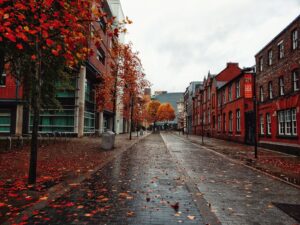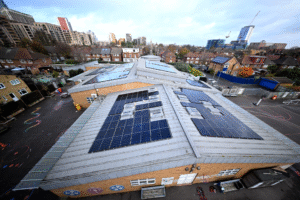Our correspondent Ian Packham has travelled to Multan for his latest report, where he observes how agriculture makes a mark in the Punjab province and explores the impacts of the Plant4Pakistan initiative to increase tree cover.
From Rawalpindi, I reach the city of Multan via the springy suspension of a second-class carriage on Pakistan Railway’s Mehar Express. I’ve long considered rail transport a better way of connecting with people than by road or air, though an economics student travelling in the same six-seat compartment hints that it might just be that Pakistanis are chattier by nature. ‘In Europe, you read or work on the train’ he says. ‘Here in Pakistan, we talk even though we don’t know each other, or look out at the scenery. The bus is half the time, but I still take the train.’
Now deep within the agricultural heartland of Punjab province, the scene I observe from the train’s slightly streaky windows is a homely one, at least in part. There are grassy fields dotted with broadleaf trees and various groups of boys off school for the weekend midway through cricket matches. Neither would look out of place in England. And there are snapshots that would look very odd indeed – perhaps not the waving trackside families, but certainly the paddy fields and the date palms they stand beside.
Farming accounts for roughly a fifth of Pakistan’s land use, mainly in the fertile river valleys of Punjab (which gets its name from the ‘five rivers’ which become the Indus). Agriculture contributes more than 20% to the country’s GDP and employs roughly half the population in one way or another.
Between big cities such as Rawalpindi and Multan, in rural communities which took the brunt of the recent floods, it’s more like 60% of people connected to the soil. Any adverse event resulting from the changes in climate Pakistan is experiencing, be it a flood, drought or the spread of disease, can therefore have a huge impact on communities.
It’s these same communities which are now fighting back. It’s often thought that it’s the west (or global north) which leads on environmental matters. One of the most impressive parts of my journey so far is the fact Pakistan proves this assumption wrong.
I write this after travelling down roads more-or-less chosen at random from the map because they run primarily southward from Multan. But it could equally be my very first days on the roads of the Karakorum Mountains. I pass roadside avenues of healthy-looking saplings, small walled orchards and groves of newly planted trees both in the mountains and now in Punjab. They have all been part of the Plant4Pakistan initiative, also known as the 10 Billion Tree Tsunami.
The aim is an audacious if simple one – to plant ten thousand million trees, an almost incomprehensible number. According to the World Bank, most countries have tree cover totalling approximately a third of their territory. In Pakistan, it’s just 5%. The railways I used to reach this part of the country were partly responsible – thousands of miles of track needed millions of timber sleepers to support them.
But for those on the ground living difficult lives as subsistence farmers, there are more than just environmental benefits to the success of the project. ‘The best thing about Plant4Pakistan is that it provides employment in poor rural areas’ says Fridays for Future Pakistan activist Fatemah Sultan. Not only do seedlings have to be tended, but in many areas they need to be protected with metal frames to prevent them being nibbled by hungry goats – jobs which provide stable pay of around £4 per day.
Planting a few trees, or even 10 billion of them, won’t solve Pakistan’s climate crisis. However, it’s impact on communities can be slowed and this allows the country to take charge without waiting for western polluters to act, as Pakistan proves.
Revisit Ian Packham’s previous dispatches from Pakistan:
Karakorum – The climate change frontline
New lakes form another risk in Karakorum
Is sustainable development possible?
The environment in Pakistan’s cities
Photos provided by Ian Packham















